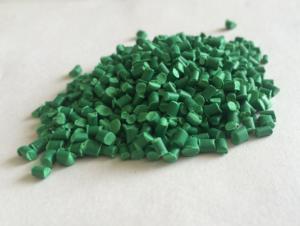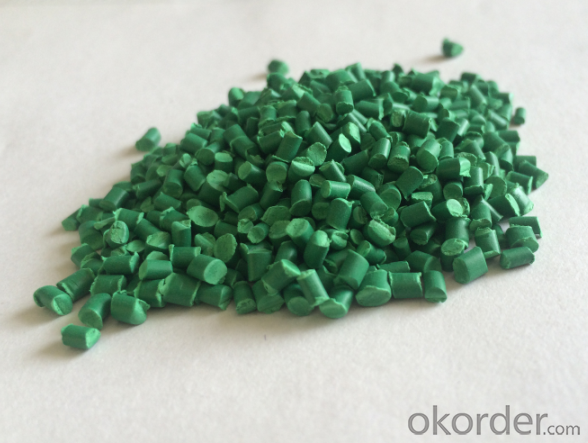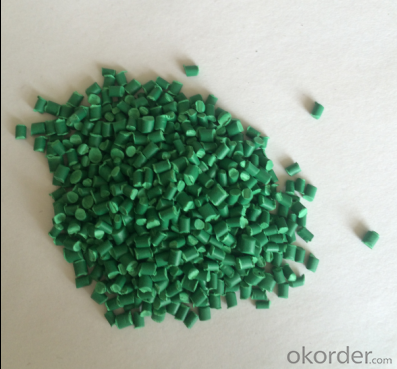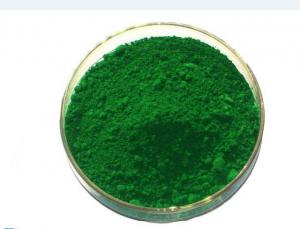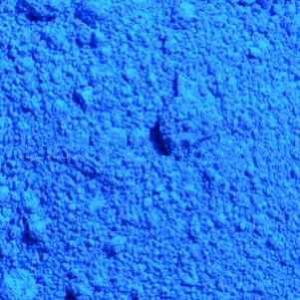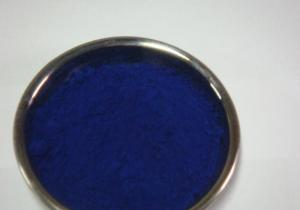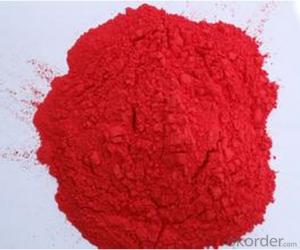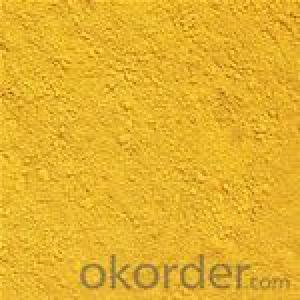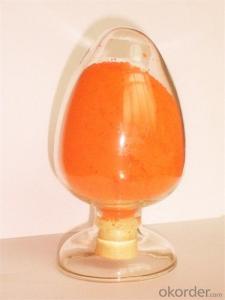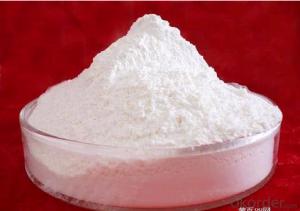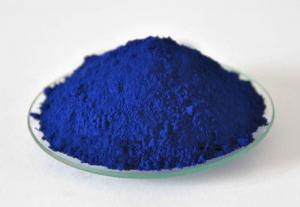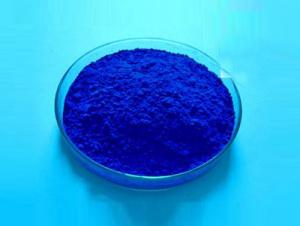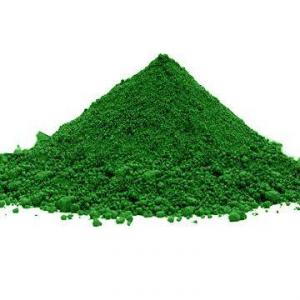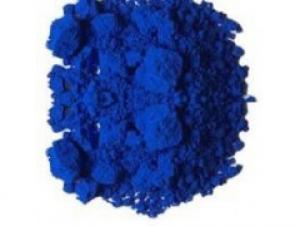Hot Sale PP Modified masterbatch 5 Off Discount
- Loading Port:
- Ningbo
- Payment Terms:
- TT or LC
- Min Order Qty:
- 1000 kg
- Supply Capability:
- 15000 kg/month
OKorder Service Pledge
OKorder Financial Service
You Might Also Like
Specifications
Masterbatch is a solid or liquid additive for plastic used for coloring plastics.
Advantage:
1.This series color masterbatches are of high concentration pigment with bright colors.
2.When they are used in resins, it shows better dispersing and stablility performance.
3.Also the mixture has the highest mechanical intensity preservation rate.
4.A broad standard color range available from stock as well as tailor made products develop according to customer requirements.
Resin Suitability
1.Polyolefine : HDPE,LDPE,LLDPE,PP,EVA,TPE,PVC,etc.
2.Non-Polyolefine: PET, PBT, PC, PA, ABS,AS,PS,POM,etc.
Application Areas
1.Fiber ( Carpet, Textiles, Upholstery, etc.)
2.Film ( shopping bags, casting film, multilayer film, etc.)
3.Blow Molding ( Medical & Cosmetic container, Lubricant & Paint container, etc)
4.Extrusion Molding ( Sheet, Pipe, Wire & Cable, etc.)
5.Injection Molding ( Automotive, Electronic, Construction, House wares, Furniture, Toys, etc.)
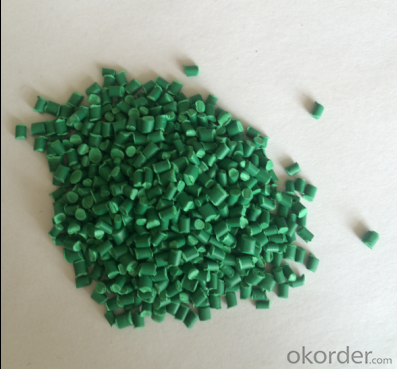

- Q: thank you very much for your help!
- photosynthetic pigment or antenna pigment is a pigment that is present in chloroplasts or photosynthetic bacteria and captures the light energy necessary for photosynthesis. Green plants have five closely-related photosynthetic pigments (in order of increasing polarity): Carotene - an orange pigment Xanthophyll - a yellow pigment Chlorophyll a - a blue-green pigment Chlorophyll b - a yellow-green pigment Phaeophytin a[1] - a gray-brown pigment Phaeophytin b[1] - a yellow-brown pigment Chlorophyll a is the most common of the six, present in every plant that performs photosynthesis. The reason that there are so many pigments is that each absorbs light more efficiently in a different part of the spectrum. Chlorophyll a absorbs well at a wavelength of about 400-450 nm and at 650-700 nm; chlorophyll b at 450-500 nm and at 600-650 nm. Xanthophyll absorbs well at 400-530 nm. However, none of the pigments absorbs well in the green-yellow region, which is responsible for the abundant green we see in nature.
- Q: What are accesory pigments and why are they important?
- Accessory pigments, also called, Photosynthetic Pigments or Chloroplast pigments, are pigments which are present within the cell of a Chloroplast used to harvest a greater spectrum of light.y are colored compounds which absorb and transfer light energy to chlorophyll. Pigments are light-absorbing molecules. In addition to chlorophyll,other pigments, principally yellow and orange carotenoids, as well asother forms of chlorophyll, are also present in green plants. These molecules absorb light and then pass the energy to the chlorophyll and accessory pigments, like the carotenoids, enable the plants to use more ofthe light than is trapped by chlorophyll alone.
- Q: What does the word pigment mean?
- it means the color. like the pigment of your eyes could be green, blue, hazel. or the pigment of your skin. it's a fancy-pants word for color.
- Q: I hear about it cause my Friend is albino and she was born with no pigments in her hair,skin or eyes
- then she is natural coz she is not using any substances to colour or paint....
- Q: what pigment are? give two example
- pigments found in plants, vegetables and fruits, make them look colorful. pigments found in animal skins, givie us colorful animal skins with variety of shades. Plant pigment Chlorophyll makes plant leaves look green. Plant pigment Carotenoid makes fruits and vegetables look orange, yellow, red. Plant pigment Phycobilin makes plants look bluish green or red.
- Q: I hear about it cause my Friend is albino and she was born with no pigments in her hair,skin or eyes
- Melanin (i /?m?l?n?n/; Greek: μ?λα?, black) is a pigment that is ubiquitous in nature, being found in most organisms (spiders are one of the few groups in which it has not been detected). In animals melanin pigments are derivatives of the amino acid tyrosine. The most common form of biological melanin is eumelanin, a brown-black polymer of dihydroxyindole carboxylic acids, and their reduced forms. All melanins are derivatives of polyacetylene. The most common melanin – dopamelanin – is a mixed copolymer of polyacetylene, polyaniline, and polypyrrole. Another common form of melanin is pheomelanin, a red-brown polymer of benzothiazine units largely responsible for red hair and freckles. The presence of melanin in the archaea and bacteria kingdoms is an issue of ongoing debate among researchers in the field. The increased production of melanin in human skin is called melanogenesis. Production of melanin is stimulated by DNA damage induced by UVB-radiation,[1] and it leads to a delayed development of a tan. This melanogenesis-based tan takes more time to develop, but it is long lasting.[2] The photochemical properties of melanin make it an excellent photoprotectant. It absorbs harmful UV-radiation and transforms the energy into harmless heat through a process called ultrafast internal conversion. This property enables melanin to dissipate more than 99.9% of the absorbed UV radiation as heat[3] (see photoprotection). This prevents the indirect DNA damage that is responsible for the formation of malignant melanoma and other skin cancers. Albinism (from Latin albus, white; see extended etymology, also called achromia, achromasia, or achromatosis) is a congenital disorder characterized by the complete or partial absence of pigment in the skin, hair and eyes due to absence or defect of an enzyme involved in the production of melanin.
- Q: a. chlorophyll ab. chlorophyll bc. chlorophyll cd. carotenoid pigments
- Chlorophylls are greenish pigments which contain a porphyrin ring. This is a stable ring-shaped molecule around which electrons are free to migrate. Because the electrons move freely, the ring has the potential to gain or lose electrons easily, and thus the potential to provide energized electrons to other molecules. This is the fundamental process by which chlorophyll captures the energy of sunlight. There are several kinds of chlorophyll, the most important being chlorophyll a. This is the molecule which makes photosynthesis possible, by passing its energized electrons on to molecules which will manufacture sugars. All plants, algae, and cyanobacteria which photosynthesize contain chlorophyll a. A second kind of chlorophyll is chlorophyll b, which occurs only in green algae and in the plants. A third form of chlorophyll which is common is (not surprisingly) called chlorophyll c, and is found only in the photosynthetic members of the Chromista as well as the dinoflagellates. The differences between the chlorophylls of these major groups was one of the first clues that they were not as closely related as previously thought. Carotenoids are usually red, orange, or yellow pigments, and include the familiar compound carotene, which gives carrots their color. These compounds are composed of two small six-carbon rings connected by a chain of carbon atoms. As a result, they do not dissolve in water, and must be attached to membranes within the cell. Carotenoids cannot transfer sunlight energy directly to the photosynthetic pathway, but must pass their absorbed energy to chlorophyll. For this reason, they are called accessory pigments. One very visible accessory pigment is fucoxanthin the brown pigment which colors kelps and other brown algae as well as the diatoms. From this I would say the answer is c.
- Q: What is pigment?
- mac pigments are multi use. they're probably most popular as eyeshadows, but can also be used on lips, cheeks, nails, and pretty much anywhere. the mac pro store sells several mixing mediums, to change the consistancy of the powder, for the different uses, or they can be mixed with water/visine/etc.
- Q: how exactly do pigments work? i know that they absorb every color except the one that we see, but what are the exact physics or whatever behind the selective absorption of the light?
- Photons are the packets of energy that light delivers. Different colors of light have different amounts of energy in each of the light's photons. So, green light's photons have different amounts of energy from red light's photons. Different materials absorb different amounts of energy via photons very selectively. It has to do with the energy states of the molecules, and the electrons that are in the outer shell.
- Q: How are plant pigments involved in photosynthesis?
- Plant pigments - as other pigments - interact with light to absorb only certain wavelengths. In plants the different sorts of pigments are useful to absorb available wavelengths of light and enable photosynthesis in shadow, in bright sunshine, in deep sea etc.: each pigment reacts with only a narrow range of the spectrum, there is usually a need to produce several kinds of pigments, each of a different color, to capture as much as possible of the sun's energy.
Send your message to us
Hot Sale PP Modified masterbatch 5 Off Discount
- Loading Port:
- Ningbo
- Payment Terms:
- TT or LC
- Min Order Qty:
- 1000 kg
- Supply Capability:
- 15000 kg/month
OKorder Service Pledge
OKorder Financial Service
Similar products
Hot products
Hot Searches
Related keywords
